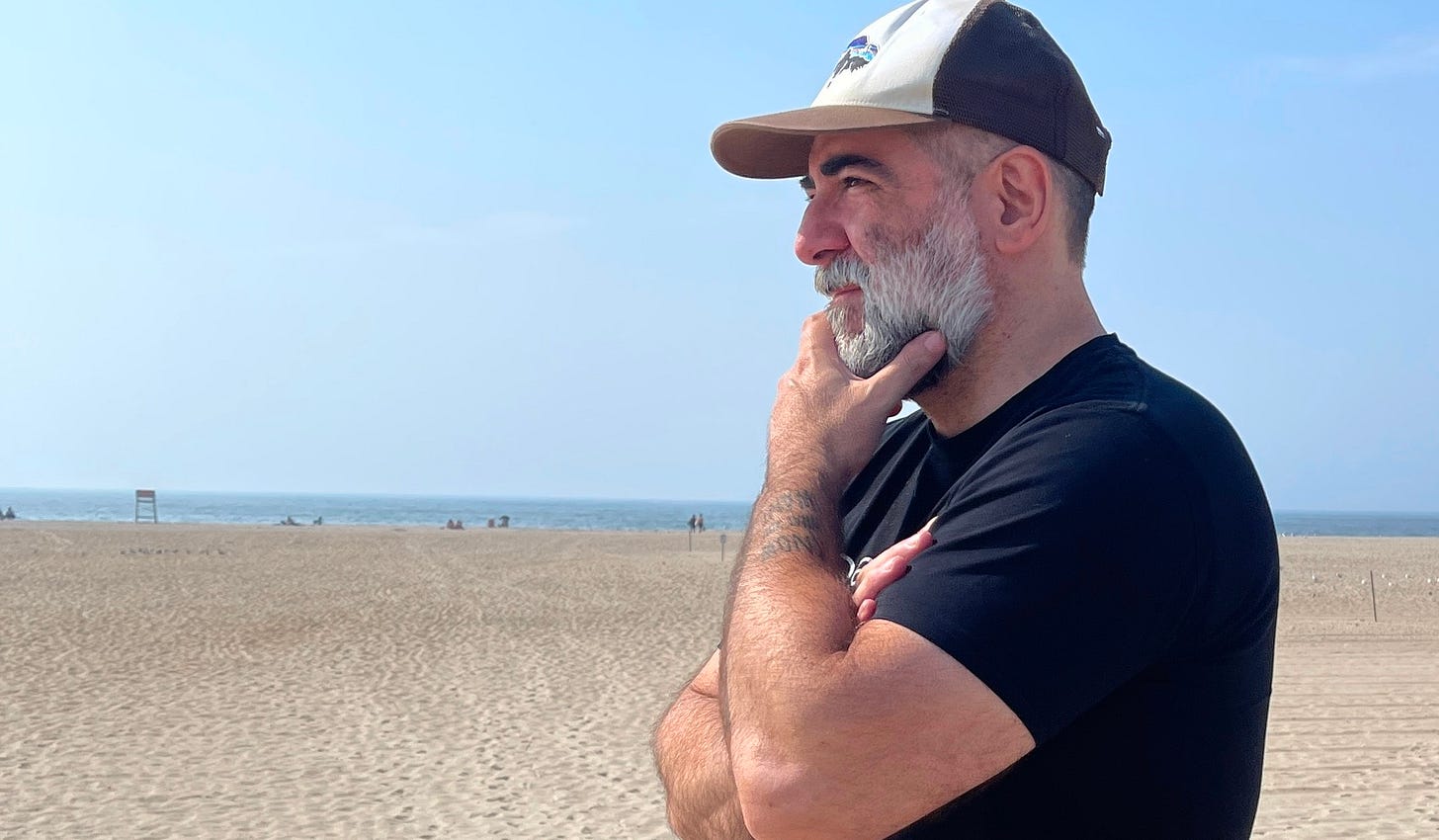Hi, I'm Manuel Saez, 2x Founder, Award-Winning Designer, and Emotional Intelligence Coach 🌻 Here I Share the advice I wish I had while building my businesses ➜ I love fixing old motorcycles 🛵🏍️
What We Think Isn’t Always What It Is
A friend of mine recently told me about a conversation he had that left him feeling uneasy.
At the time, nothing felt off.
But as the day went on, and he kept thinking about it, he started to get angry.
Not during the conversation, but after it.
In his way home after work, when he had time to think, the more he replayed it in his head, the more frustrated he felt.
I’ve been there too.
Something happens, a quick exchange, a comment, the tone used, and I brush it off.
But later, when the noise dies down and I’m alone with my thoughts, it comes back.
And now I’m irritated, maybe even upset.
At something that didn’t bother me in real time.
That’s the trap.
The Mind Makes Its Own Story
What I’ve learned over time is this:
My thoughts, especially the unchallenged ones, aren’t always telling me the truth.
They’re just telling me one version of it.
The more I let them loop, the more distorted things can get.
I start filling in gaps.
Adding meaning to words that weren’t meant that way.
Assuming a tone where there was none.
Building entire narratives out of thin air.
And when that story starts to feel real, my emotions follow.
I feel hurt.
I feel disrespected.
I feel angry.
All because I trusted a thought that wasn’t grounded in fact, just in feeling.
Unchecked Thoughts Become Toxic
It took me a while to notice this pattern.
At first, it felt like certain people or situations were just triggering.
But when I really paid attention, I realized something important:
The trigger wasn’t the person.
It wasn’t the thing they said.
It was what I told myself about what they said.
If I got distracted, if I jumped into another meeting, had lunch, or talked to someone else, that same comment didn’t bother me at all.
But if I sat with it, thought about it too long, repeated it in my head a few more times, then it would grow teeth.
Left unchecked, thoughts can become toxic.
They distort.
They escalate.
They pull us away from what actually happened and convince us something worse occurred.
The Power to Choose a Different Story
Once I saw this clearly, I started doing something different.
When a negative thought pops up, I don’t push it away; I acknowledge it.
But I don’t stop there.
I ask myself:
What else could be true?
What if the opposite is true?
What if that person didn’t mean it how I took it?
What if I’m projecting something that has nothing to do with them?
What if this whole narrative I’m building is just a reflection of how I’m feeling today?
Then I bring in an alternative version — a more generous one.
One where the person was having a rough day, or where I misheard them, or where the comment came from care, not criticism.
And then, this part matters the most, I stop thinking about it.
I don’t sit around debating both sides.
I pick the more helpful version and move on.
If the thought comes back later, I do it again.
Not because I’m trying to pretend everything is fine, but because I’ve learned that my peace depends more on how I interpret things than on what actually happens.
Rewriting Reality
Nothing about the actual conversation changes.
The facts are the same.
The person said what they said.
The moment played out the way it did.
The only thing that changes is how I see it.
And that’s where the power is.
When I shift how I see the world, the world shifts for me.
I’m not stuck in the same emotional loop.
I’m not waiting for someone else to clarify, apologize, or fix it.
I’ve already moved forward.
That doesn’t mean I ignore my feelings.
It means I take responsibility for how I hold them.
A Simple Practice for Reframing Thoughts
Here’s something that works for me:
Notice the thoughts, especially the ones that feel heavy, like anger, resentment, or frustration.
Ask: What else could be true? Look for at least one other possible version of events that’s not rooted in negativity.
Choose the version that brings more peace. Even if you’re not 100% sure it’s true, trust the version that helps you feel grounded and whole.
Let go and redirect. Distract yourself. Do something else. Let the loop end here.
It’s not about being naïve or overly optimistic.
It’s about protecting your mental and emotional energy.
And not giving your peace away to a thought that might not even be real.
Closing Thoughts
We think our thoughts are reality.
But they’re just interpretations.
Stories.
Drafts of the truth that haven’t been fact-checked.
The real power is in noticing when the story isn’t helping you, and writing a better one.
So now I’m curious...
What’s one thought you’ve challenged recently that changed how you felt about a situation?
I’d love to hear your story.
Sending you good vibes 🌻
Manuel
manuelsaez.com






Insightful article. We humans sure do love our narratives. What we think to ourselves is not always true.
This article reminds me of a post of mine that tackles this using a different metaphor.
https://heartmindfusion.substack.com/p/the-world-a-mirror-to-ourselves
The solutions all sound so simple yet why can't we do it.
Simple isn't easy.
It's up to us, choose peace.
Choose simplicity.
Not easy.
Do, we must.